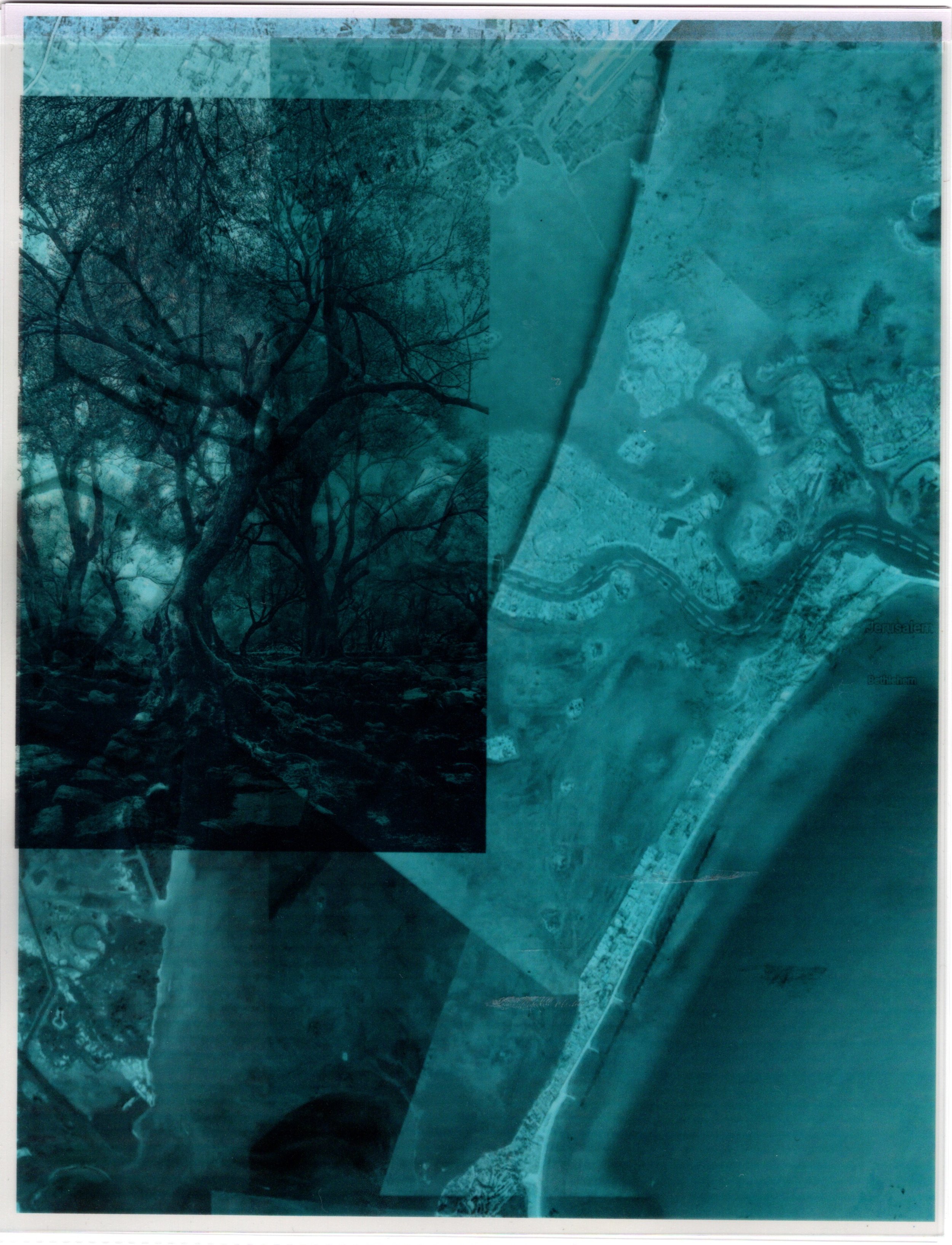How can the history of a geographical location be preserved through memory?
Is the image a true way of seeing or a manufactured truth? In an age where one can be teleported virtually to any place, how can we further understand the history of those locations?
Transparencies (Untitled Historical Investigations) responds to these questions by attempting to visualize a way of understanding information regarding history, place, time, and geographical context in the form of visual research. Crafted on transparent papers, the blending of trees, ruins, maps, and locations become one again. These twelve multi-layered transparencies are compiled as a series
of visual notes and maps of information building momentum as an ongoing process. Replacing structures with ones lost and tying the distances of coastlines together by stacking one on top of the other, these images become visual mappings of layered historical traces that follow the crucial geographical locations of Afghanistan, Germany, Italy, South Africa, and the United States.
Information on these locations was gathered through found images, Google Earth, maps, writings, and personal photographs, as a means of seeing multiple perspectives of these places. Google Earth has been a fantastic and terrifying way of traveling the globe near instantaneously.
It becomes easy to effortlessly plugin coordinates and fast travel to a location, seeing the landscape in 360°. It also beckons the question of whether the reality that is being seen behind the screen is true or not. From ancient forests to recently abandoned gold mines, how can history be understood through an image?
2021
Digital Collage Printed on Transparency Papers










































































































